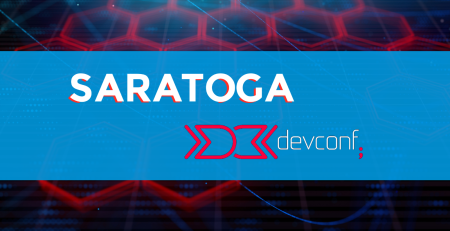Get the Most Out of Cloud Solutions for Scalable Storage and Services
By Conrad Owens: Saratoga Business Consultant. More and more businesses across verticals are moving towards cloud solutions. Why? To handle growing demands for data storage, business intelligence (BI), and extract, transform, load (ETL) workloads. This trend is further driven by the need for scalability, cost-effectiveness, and the ability to adapt to rapidly changing market conditions. For product specialists and IT managers, it is important to understand the balance between cloud and on-premise solutions if you want to optimise costs, ensure security, and maintain operational efficiency.
Data Storage: Cloud vs. On-Premise
Regulatory requirements and data sensitivity demand robust, secure, and scalable solutions. Cloud storage offers several advantages, such as elastic scalability, lower upfront costs, and reduced maintenance overhead. Institutions can scale their storage needs dynamically, paying only for the storage they use. This is particularly beneficial for companies experiencing rapid growth or seasonal fluctuations.
- Intelligent-Tiering is a cloud storage class that delivers automatic storage cost savings when data access patterns change. It is designed to optimise storage costs by automatically moving data to the most cost-effective access tier when access patterns change. Using this tiered storage approach can save significant costs on infrequently accessed and archived data.
- On-premise storage solutions offer complete control over data and can be tailored to meet specific security and compliance requirements. However, they come with significant capital expenditures, ongoing maintenance costs, and limitations in scalability.
- When considering a hybrid approach, it’s important to establish clear system boundaries. Sensitive data may remain on-premise, while less critical data, such as customer behaviour analytics, can be moved to the cloud to leverage scalability and lower costs.
Business Intelligence and ETL Workloads: Cloud Flexibility
Business intelligence (BI) and ETL workloads are essential to make informed decisions from your data. The cloud provides a flexible and scalable environment for these workloads. Tools like Amazon Redshift, Google BigQuery, and Microsoft Azure Synapse Analytics offer powerful data processing and analytics capabilities.
These cloud-based solutions allow for rapid deployment and scaling of BI and ETL processes. They can handle large volumes of data and complex queries without the need for extensive on-premise infrastructure.
In contrast, on-premise solutions can be more cost-effective for companies with stable, predictable workloads. However, the initial setup, hardware costs, and ongoing maintenance can be significant. Moreover, on-premise solutions may lack the agility and scalability needed to respond to changing business requirements.
System Boundaries: How to Balance Cloud and On-Premise Solutions
The key to optimised costs and operation efficiency is to find the right system boundaries between cloud and on-premise solutions. A hybrid approach often makes the most sense.
For example, core banking systems or policy administration systems with critical transaction data may remain on-premise due to security and compliance concerns. While BI, ETL workloads, and customer relationship management systems could be moved to the cloud to take advantage of scalability and cost savings.
Monthly costs can be minimised by using cloud services for variable workloads that can scale down during off-peak periods.
Cloud migration costs should also be considered when transitioning from on-premise to cloud solutions. These include not only the direct costs of data transfer and integration but also the potential downtime and the learning curve for staff.
Internal development costs for on-premise systems can be higher due to the need for specialised skills in maintaining hardware, software, and security protocols. Conversely, cloud solutions often come with built-in tools and services that reduce the need for extensive in-house development, though they may require training for cloud-specific skills.
Risks and Challenges of Hybrid Solutions
Implementing a hybrid solution comes with its own set of risks and challenges. Data security is a primary concern, particularly when data moves between on-premise and cloud environments. Ensuring compliance with regulatory requirements across different jurisdictions can be complex, and mismanagement of these aspects can lead to significant fines and reputational damage.
Another challenge is the potential for increased complexity in IT operations. Managing and integrating systems across both environments requires robust infrastructure, careful planning, and skilled personnel. There is also the risk of vendor lock-in with cloud providers.
Skills and Time Demands
Building and maintaining on-premise solutions require a workforce skilled in traditional IT infrastructure, network management, and security protocols. These skills are becoming less common as the industry shifts towards cloud-first strategies. The time and resources required for ongoing maintenance, updates, and scaling can also be significant, impacting overall productivity.
Cloud solutions, while often easier to deploy and scale, demand expertise in cloud architecture, data management, and cybersecurity. Teams must leverage cloud-native tools and services, which may require training and certification. Additionally, the pace of innovation in cloud technologies means that continuous learning is essential to stay current with best practices.
Read: Top 10 Countries for Outsourcing Software Development: A Comparison
Decision Chart for Cloud Migration
This decision chart ranks different types of services and capabilities that can be migrated to a cloud solution, taking into account the complexity of the migration, the amount of work required, and the cost.
| Service/Capability | Description | Migration Complexity | Amount of Work Required | Cost | Overall Ranking |
| 1. Email and Collaboration Tools | Migrating email systems like Office 365, Google Workspace. | Low | Low | Low | Easiest |
| 2. Backup and Disaster Recovery | Offsite backup storage, disaster recovery solutions. | Low | Low | Low to Medium | Easiest |
| 3. Web Hosting and Static Content | Hosting websites, static content delivery via CDN. | Low | Low to Medium | Low | Easiest |
| 4. Development and Testing Environments | Cloud-based Dev/Test environments (e.g., CI/CD pipelines). | Low to Medium | Medium | Low to Medium | Moderate |
| 5. Business Intelligence (BI) | Moving BI tools like Power BI, Tableau to the cloud. | Medium | Medium to High | Medium | Moderate |
| 6. Customer Relationship Management (CRM) | Migrating CRM systems to SaaS solutions like Salesforce. | Medium | Medium | Medium | Moderate |
| 7. Document Management Systems | Migrating document management to cloud solutions like SharePoint Online. | Medium | Medium to High | Medium | Moderate |
| 8. Data Storage and Archiving | Migrating data to cloud storage solutions like S3, Azure Blob. | Medium to High | Medium to High | Medium to High | Moderate to Challenging |
| 9. ERP Systems | Enterprise Resource Planning systems to cloud platforms. | High | High | High | Challenging |
| 10. ETL Workloads | Migrating ETL processes to cloud-based data integration services. | High | High | High | Challenging |
| 11. Core Transactional Systems | Migrating core transaction processing systems to the cloud. | Very High | Very High | Very High | Most Challenging |
| 12. Legacy Applications | Re-architecting or lifting and shifting legacy apps to the cloud. | Very High | Very High | Very High | Most Challenging |
This decision chart can help IT managers and product managers prioritize which services to migrate to the cloud based on complexity, work required, and cost considerations. The chart provides a structured approach to planning cloud migration efforts, balancing the benefits and challenges of each service type.
Saratoga Cloud Expertise
Our Saratoga technical consultants are qualified to assist your company in making decisions, and implementing cloud architecture and solutions. We have several experienced engineers with industry qualifications including:
- AWS Cloud Practitioner
- AWS Solution Architect Associate
- Microsoft Azure Developer
- Microsoft Azure Administrator
- Microsoft AI Engineer
Recent Saratoga Cloud Implementations
A UK Fund Raising Platform
A prominent UK – based fund raising platform with over 120 000 donors required the transfer of several elements of their platform to the cloud to save on costs and take advantage of some of the latest technologies. Saratoga engineers managed the migration of their core application system, including development and testing environments.
A fully cloud-native approach was used, deploying services directly to Azure rather than using containers. The project included integrating Azure Active Directory (AD) with on-premises Active Directory and creating a secure hub-and-spoke architecture. In the process, user and application security where migrated to a zero trust security model – no one is trusted by default from inside or outside the network, and verification is required from everyone trying to gain access to resources.
A Popular News & Media Platform
Saratoga designed and implemented an online cloud platform for several of South Africa’s largest news sources. The transition to cloud-native solutions aimed to reduce costs by leveraging auto-scaling and other cloud benefits. The team was given full control of the project, handling everything from architecture to CI/CD implementation. The initial setup involved using VMs but was later migrated to a serverless architecture using AWS Lambda.
A microservices architecture was used, running various services in the cloud and hosting included significant scalability to handle up to 12 million page views per month. An independent CMS for static pages and forms was also developed to push out notifications for over 520,000 subscriptions. The solution design used AWS Elastic Beanstalk for web hosting and shared storage to support horizontal scaling for data and session information.
A Correspondence Engine
One of South Africa’s largest Financial Services company contracted Saratoga’s cloud expertise to optimise and scale their correspondence engine to handle the production of tens of millions of tax certificates. The high-workload solution required the uploading of the base data to an AWS environment, using AWS DataSync, and the generation of all the tax PDFs. These documents then had to be moved back into the on-premise storage environment for distribution.
Our engineers scaled the system up to 30 AWS nodes for a few days, taking advantage of short-term scalability features to handle the large processing job. The Saratoga team worked under extremely tight deadlines to successfully deliver the tax certificates in time for distribution.
Need effective strategies to implement cloud solutions in your organisation?
Ask the experts at Saratoga. Contact us today.










